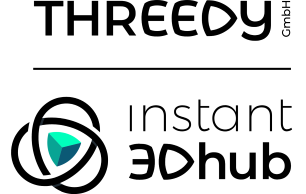- the paper presents a novel approach to the Point Splatting rendering technique
- the presented approach uses multi-layered feature maps that are processed with a neural network to generate the final output

- the blog post presents a frame investigating into a frame of the game syndicate from 2012
- shows the different rendering passes and provides an overview of the techniques used in each pass

- the video explains a compression technique developed for height field compression
- covering quantization, quadtree, delta encoding, as well as linear regression
- source code as a Godot implementation is provided

- the blog post describes the observer correlation and coupling that is introduced into computer graphics through the use of RGB rendering
- explains physical definitions of terms and how the rendering definitions introduce these inherent limitations compared to spectral definitions

We are Threedy, a dynamic startup that emerged as a spin-off from the Fraunhofer Institute for Computer Graphics Research IGD in Darmstadt in 2020.
Threedy develops and distributes instant3Dhub - the first Visual Computing as a Service technology. It enables the productive use of Mixed Reality and digital work scenarios in any industrial applications in a simple and straightforward manner.
As an Unreal Developer, you will be involved in the development of our distributed rendering system and work on integrating our technology with the Unreal Engine.

- the blogpost discusses the changes AMD made to LLVM
- these changes might indicate hardware changes coming for the upcoming RDNA4 generation

- the video introduces a new Vulkan tutorial
- the video focuses on the introduction of the audience, software/hardware requirements
- shows how to set up Vulkan and create a window

- the article presents updates in HIP (Heterogeneous-compute Interface for Portability) Raytracing implementation
- presents how multi-level instancing allows reduction of memory usage
- additionally discusses BVH construction speed improvements

- the video provides an in-depth explanation of why LOD (Level of Detail) for 3D models helps to improve rendering performance
- shows how the hardware pipeline is organized, what data GPUs are optimized, and how different workloads cause different bottlenecks
- explains all stages of the pipeline involved and provides additional reading sources
- the article presents the start into a series of explaining BC (DDS, Block Compression) formats
- this part shows how to build a working BC4 compressor
- explains each step and discusses the limitations of the presented techniques

Thanks to Marius Horga for support of this series.
Would you like to see your name here too? Become a Patreon of this series.